A safe Place for Sea Turtle Nests
Hatchery Site at Munting Buhangin

Aerial photos above and below by Felix Cybulla (Ivakale/February 2020)

Beach 2 at Munting Buhangin provides an almost ideal place for transferred nests to incubate and for the release of sea turtle babies. Located above the usual high tide line, the hatchery site is enclosed with plastic mesh on all sides.
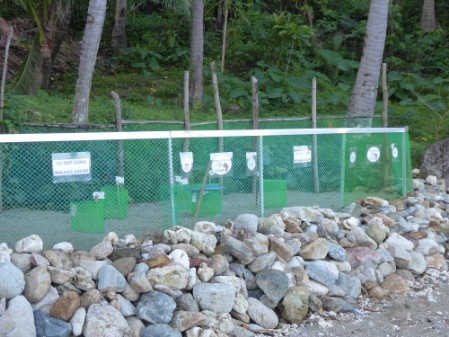
The front (facing the sea) is supported by a stacked stone wall of about 120cm height. This wall is an additional protection against possible tidal waves caused by typhoons and prevents nest flooding and wash-outs.
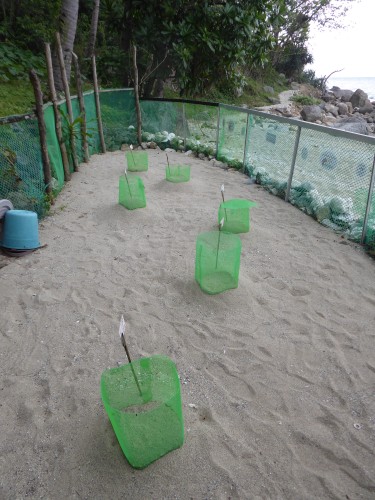
Observing the minimum distance of 100 cm between nests, the hatchery site provides room for up to 12 batches at any one time.
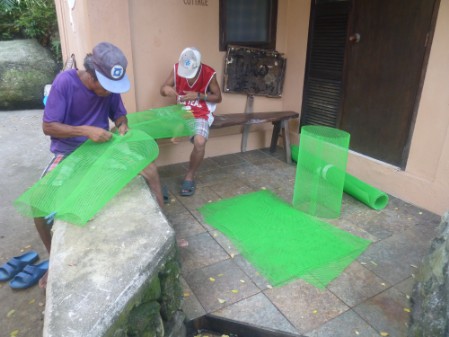
Volunteers are preparing individual nest enclosures, using 1/4" plastic mesh, cut to size and stitched together to form an open tube shape. These serve as additional protection for each batch and as a reliable marker of the location.
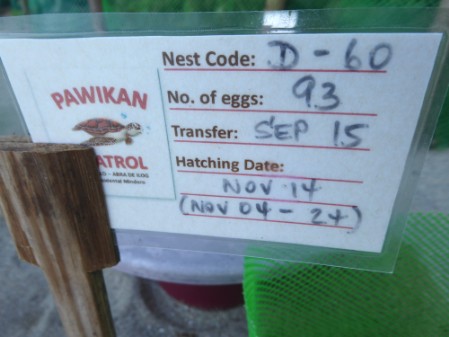
We mark each nest with its own unique code card:
the capital letter indicates the original location (e.g. "D" for "Diumanod beach"); followed by a number representing the last of the total number of nests. We also state the clutch size, date of transfer and the expected hatching date (period).
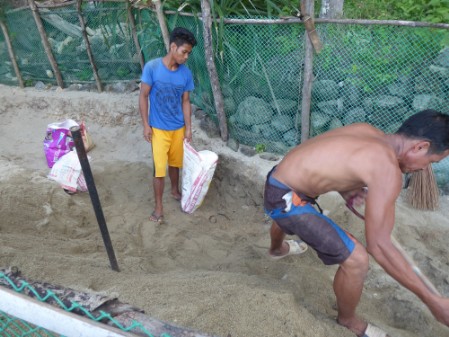
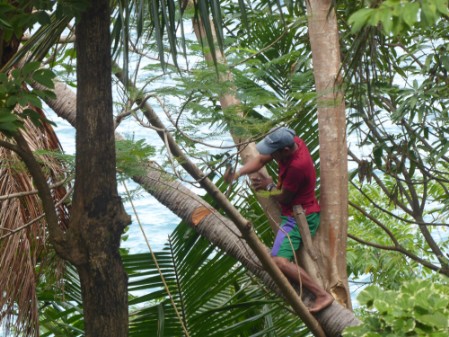
A hatchery site needs regular maintenance: at least once per year, when the site is empty between nesting seasons, we have to aerate and replace the sand fill. We need to check on and remove any invasive roots from beach vegetation, trim the fronds and remove the fruit of the surrounding coconut palm trees.